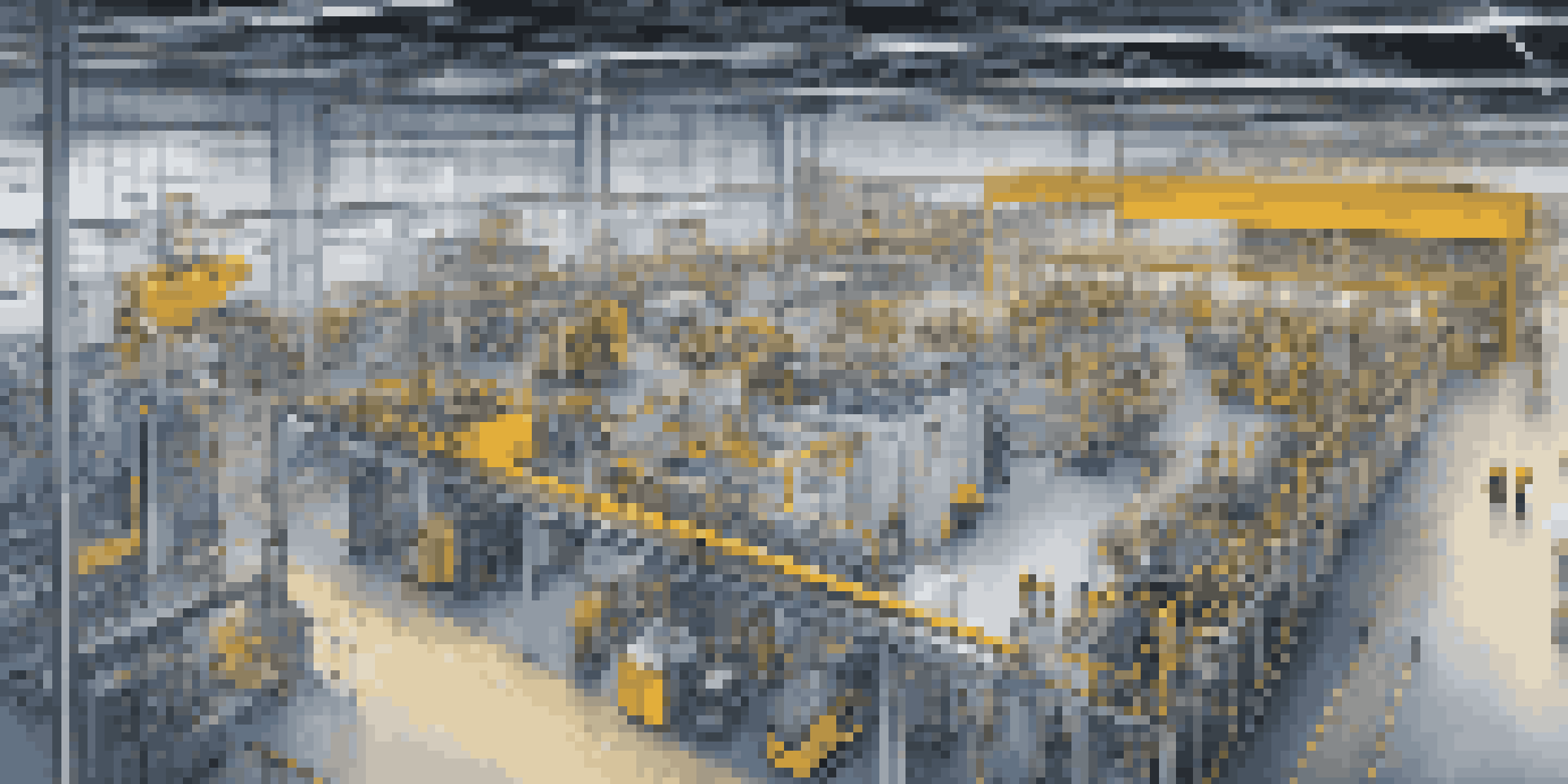The Importance of Predictive Maintenance in Smart Factories

Understanding Predictive Maintenance in Smart Factories
Predictive maintenance is a proactive approach that leverages data analytics to anticipate equipment failures before they happen. In the context of smart factories, this means using IoT sensors and machine learning algorithms to monitor machines in real-time. By analyzing patterns in the data collected, businesses can make informed decisions about when to perform maintenance, avoiding unexpected breakdowns.
The goal of predictive maintenance is to keep machines running at optimal performance while minimizing downtime and repair costs.
Think of predictive maintenance as a weather forecast for your factory's machinery. Just like a weather app warns you about impending rain, predictive maintenance alerts you to potential equipment issues. This not only helps in planning maintenance schedules but also minimizes downtime, leading to smoother operations.
As factories continue to evolve into smart environments, understanding predictive maintenance becomes crucial. It allows manufacturers to maintain a competitive edge by ensuring that their operations are both efficient and cost-effective.
Benefits of Predictive Maintenance in Efficiency
One of the most significant advantages of predictive maintenance is its impact on operational efficiency. By addressing maintenance needs before they escalate into costly repairs, factories can keep production lines running smoothly. This efficiency translates into increased productivity and less waste, ultimately boosting the bottom line.

For example, imagine a factory that implements predictive maintenance and reduces machine downtime by 30%. This improvement not only means that more products are manufactured but also that employees can focus on value-added tasks rather than putting out fires caused by equipment failures.
In essence, predictive maintenance acts like a well-tuned engine in a car, ensuring that everything runs optimally. When systems function at their best, the entire factory benefits from improved workflow and reduced stress on resources.
Cost Savings Through Predictive Maintenance
Implementing a predictive maintenance strategy can lead to significant cost savings for manufacturers. By preventing unexpected equipment failures, companies can avoid the high costs associated with emergency repairs and replacement parts. This proactive approach not only saves money but also extends the lifespan of machinery.
An ounce of prevention is worth a pound of cure.
Consider a manufacturing plant that spends thousands annually on reactive maintenance. After transitioning to predictive maintenance, they notice a substantial decrease in these costs. This shift allows them to reallocate funds towards innovation and growth instead of merely fixing problems.
When viewed from a financial perspective, the investment in predictive maintenance pays off in the long run. By reducing both maintenance costs and the risk of production interruptions, businesses can channel their resources more effectively.
Enhancing Safety with Predictive Maintenance
Safety is paramount in any manufacturing environment, and predictive maintenance plays a significant role in enhancing workplace safety. By identifying potential equipment failures before they occur, businesses can prevent accidents that might result from malfunctioning machinery. This proactive stance not only protects employees but also fosters a culture of safety.
For instance, a factory that regularly assesses its machinery's condition is much less likely to experience equipment-related injuries. When workers know that the equipment they operate is regularly monitored and maintained, they can perform their tasks with greater confidence and peace of mind.
Ultimately, investing in predictive maintenance is an investment in a safer work environment. By prioritizing safety alongside efficiency, factories can create a more productive and harmonious workplace.
The Role of Technology in Predictive Maintenance
Technology is the backbone of predictive maintenance in smart factories. With advancements in IoT, big data, and machine learning, manufacturers can now gather and analyze vast amounts of data from their equipment. This technological integration allows for more accurate predictions and effective maintenance scheduling.
Imagine a factory equipped with sensors on every piece of machinery, continuously sending data to a centralized system. This system analyzes trends and alerts managers when a machine shows signs of wear or impending failure. It's like having a personal health monitor for your equipment, ensuring that everything remains in optimal condition.
As technology continues to evolve, so too will the capabilities of predictive maintenance. Staying updated with the latest innovations can provide manufacturers with the tools they need to stay ahead of the curve.
Challenges in Implementing Predictive Maintenance
Despite its many benefits, implementing predictive maintenance is not without challenges. One of the primary obstacles is the initial investment in technology and training. Many manufacturers may hesitate to adopt predictive maintenance due to the perceived high costs involved.
However, it's essential to view this investment as a long-term strategy. Like planting a tree, the initial effort may seem daunting, but the benefits—such as reduced costs and improved efficiency—will grow over time. Education and training for staff are equally crucial to ensure that everyone is on board with the new systems.
Addressing these challenges requires a commitment to change and a willingness to adapt. With the right mindset and resources, manufacturers can successfully navigate these hurdles and reap the rewards of predictive maintenance.
The Future of Predictive Maintenance in Smart Factories
As industries continue to embrace smart technologies, the future of predictive maintenance looks promising. We can expect even more advanced analytics, artificial intelligence, and machine learning capabilities that will refine how maintenance is performed. This evolution will lead to even greater efficiencies and cost savings.
Moreover, as the digital landscape expands, integration with other smart factory systems will enhance the predictive maintenance process. Imagine a fully interconnected factory where every aspect—from supply chain management to production—is optimized through data-driven insights.

In conclusion, the future of predictive maintenance holds exciting possibilities. By staying at the forefront of these advancements, manufacturers can ensure their factories remain competitive and responsive to the ever-changing market demands.